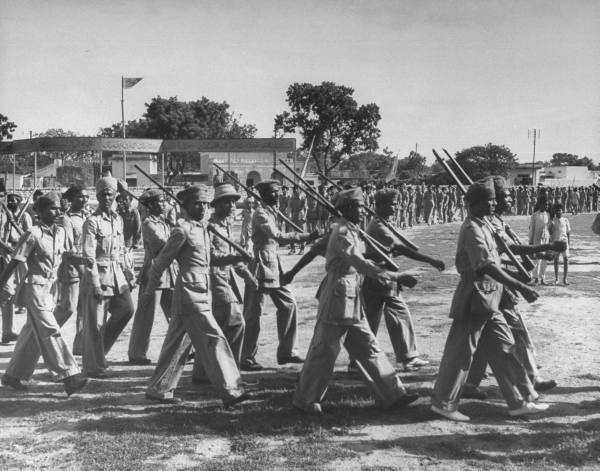Summary
The Razakars, a paramilitary force in Hyderabad State during the British Raj, were instrumental in resisting integration into India and upholding Muslim rule. Led by Qasim Razvi, they committed atrocities against Hindus and opponents of Muslim rule. Despite repeated demands from India, the Nizam refused to disband them. India’s ‘police action’ led to their surrender, with Razvi seeking asylum in Pakistan. The legacy of the Razakars remains contentious, with some viewing them as defenders of Muslim interests and others as perpetrators of violence and oppression. Their story reflects the complexities of power and identity during the Indian independence era.
Unraveling the History of the Razakars: A Tale of Power, Politics, and Bloodshed
Paramilitary Forces in the Hyderabad State
The Razakars, a paramilitary volunteer force in the Hyderabad State during the British Raj, have left an indelible mark on the annals of Indian history. Initially formed in 1938 by Bahadur Yar Jung, a leader of the Majlis-e-Ittehadul Muslimeen, the Razakars gained prominence under the leadership of Qasim Razvi during the tumultuous period surrounding Indian independence.
Upholding Muslim Rule and Resisting Integration
The Razakars played a pivotal role in upholding Muslim rule in Hyderabad and resisting integration into India. Described as “enthusiastic” and “disciplined,” they fervently supported the cause of maintaining the sovereignty of Hyderabad State and combating those advocating for its merger with India. However, their methods often involved brutal atrocities against Hindus and dissenters, sparking fear and unrest among the populace.
Standstill Agreement and Armed Invasion
Despite repeated demands from the Indian government to disband the Razakars, the Nizam of Hyderabad refused, leading to a standstill agreement between Hyderabad and India. However, tensions escalated, culminating in the Indian Army’s armed invasion, known as ‘Operation Polo.’ The Razakars fiercely resisted the invasion but ultimately surrendered to the overwhelming force of the Indian military.
Aftermath and Disbandment
Following the merger of Hyderabad into the Indian Union, the Razakars were disbanded, and their leaders, including Qasim Razvi, were arrested. The Majlis-e-Ittehadul Muslimeen was initially banned but later rechartered as All India MIM (AIMIM) under new leadership. Qasim Razvi, after serving time in Indian prisons, eventually emigrated to Pakistan, marking the end of an era fraught with conflict and bloodshed.
Echoes in Popular Culture
The legacy of the Razakars continues to reverberate through popular culture, with films like “Razzakar” and “Razakar – Silent Genocide of Hyderabad” shedding light on this tumultuous chapter in Indian history. These cinematic portrayals serve as poignant reminders of the human cost of power struggles and political ideologies.
Also read: Telangana Students Meet Untimely Demise in US Road Accident
The saga of the Razakars stands as a testament to the complexities of identity, governance, and resistance in the tumultuous era of Indian independence. As we reflect on this turbulent chapter in history, it serves as a sobering reminder of the enduring legacy of violence and the imperative of striving for peace and harmony in a diverse and pluralistic society.
Last Updated on Tuesday, April 23, 2024 3:36 pm by Admin



